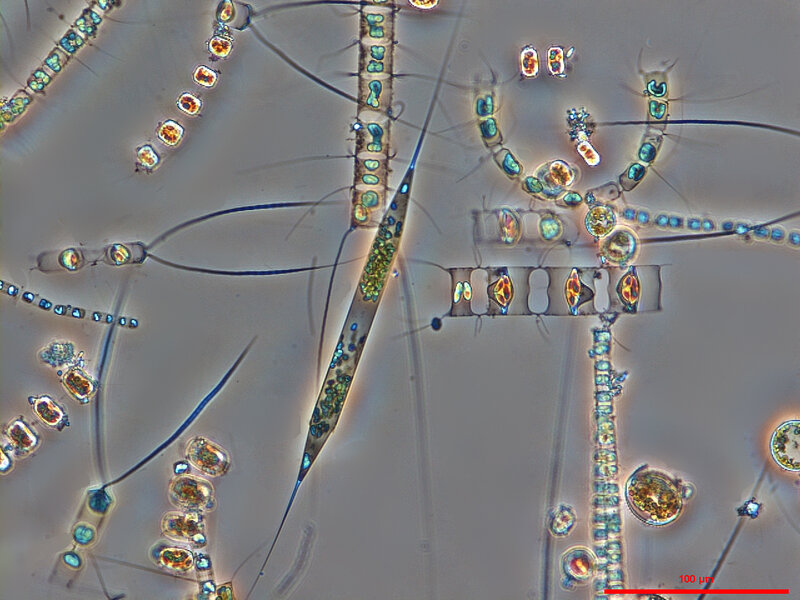How fast ocean currents will help plankton survive climate change
Loading...
Oceans can move pretty fast, and that's good news for the world's phytoplankton.
Phytoplankton require specific conditions to thrive. With climate change altering water temperature, salinity, and nutrient concentrations in the oceans, and ocean connectivity rates of thousands of years, it will take too long for plankton to reach new, more hospitable regions if global warming impacts their current environment.
Or maybe not.
Plankton can move between any two random points on the globe within just one decade, suggest two researchers in a study published Wednesday in the journal Nature Communications. That's good news for phytoplankton, of course, and also for the entire marine ecosystem, which depends on these tiny creatures.
"Some argue that, due to limited dispersal and isolation, plankton communities and their evolution are at the mercy of changing environmental conditions," the authors said in a press release. Their study, however, finds that different surface ocean regions are connected within about 10 years, meaning plankton may manage to migrate and survive if their current environment takes a turn for the worse.
"We wanted to find the fastest connection," the "Google Maps for plankton," explains Dr. Bror Jönsson, a researcher at Princeton University and lead author of the study, in a phone interview with The Christian Science Monitor.
"If you want to drive to New York City from Boston, you wouldn't take I-95 the whole way. Instead, Google Maps would find the fastest route, utilizing smaller roads," he says. "And that's the same kind of algorithm we've used for the plankton."
Because phytoplankton can't control their movement or direction, ocean connectivity is especially important for their survival. In fact, adds Dr. Jönsson, the word plankton comes from the Greek word for "wander" or "drift." So while phytoplankton can't consciously identify newly inhospitable habitats, Jönsson and his colleague Dr. James Watson, from Stockholm University, say phytoplankton will prevail despite climate change implications because at least some populations will reach hospitable regions in a reasonable timeframe.
To explain the difference between his study and previous predictions of ocean connectivity, Jönsson compares his the ocean to a swimming pool of water with a drop of food dye added. Other studies say total ocean movement around the globe could take hundreds of thousands of years, because they are measuring the travel time to get to every corner of the pool.
Jönsson and Dr. Watson, by contrast, put a drop of food dye in the pool and focus on the dispersal time for the colored water specifically. In other words, says Jönsson, their recent study predicted the fastest time phytoplankton (or the colored food dye) could move between two points, not the mean time.
But with other more charismatic species such as manatees, coral reefs and orcas also suffering from climate change, why focus on tiny, brainless, floating bacteria?
"They are the most important organisms that exist. They are the building block of all marine ecosystems everywhere," explains Jönsson. "We never think about grass; that's a boring thing. But we would never get beef or anything else without it."
Not only are plankton the base of the oceanic food chain, but they also act as a carbon sink. Like plants, they use photosynthesis, meaning they consume carbon dioxide and emit oxygen. And when plankton die, after spending their life absorbing human-induced CO2 from the atmosphere, they sink to the bottom of the ocean. By bringing some 50 percent of the world's CO2 to the deep ocean, plankton have a crucial role in reducing greenhouse gas and slowing climate change.
"People say the Amazon is the lung of the Earth, but that's actually not really true," says Jönsson. "It's really the phytoplankton in the ocean."








